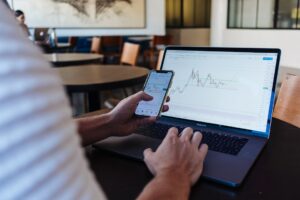Pips vs. Points in Forex Trading: What’s the Difference?
In the world of Forex trading, understanding the various terminologies and jargon is essential for success. Two commonly used terms are pips and points, which are used to measure price movements in the Forex market. While they may seem similar, there are important differences between the two. In this article, we will explore the distinctions between pips and points and their significance in Forex trading.
Pips, short for “percentage in point,” are the most commonly used unit of measurement for price movements in Forex. A pip represents the smallest incremental change in the price of a currency pair. Most currency pairs are quoted to the fourth decimal place, with the exception of the Japanese yen pairs, which are quoted to the second decimal place. For example, if the EUR/USD pair moves from 1.2000 to 1.2001, it has increased by one pip.
Pips are important because they allow traders to measure and calculate profits and losses accurately. When a trader enters a trade, they aim to make a certain number of pips to achieve profitability. For instance, if a trader buys the EUR/USD pair at 1.2000 and the price moves to 1.2050, the trader has made a profit of 50 pips. Conversely, if the price moves to 1.1950, the trader has incurred a loss of 50 pips.
Points, on the other hand, are used to measure price movements in other financial markets, such as stocks and futures. Unlike pips, which have a standardized value, points can have different values depending on the market and the trading instrument. For example, in the stock market, a point may refer to one dollar, while in the futures market, it may represent a specific index value.
In Forex trading, points are often used to refer to the fractional part of a pip. Since most currency pairs are quoted to the fourth decimal place, a point would represent one-tenth of a pip. For example, if the EUR/USD pair moves from 1.2000 to 1.2001, it has increased by 10 points. Similarly, if the price moves to 1.2010, it has increased by 100 points, or one pip.
While pips and points are distinct in their measurement and representation, they are both crucial for Forex traders. Pips provide traders with a standardized unit of measurement, allowing them to accurately calculate profits and losses. Points, on the other hand, offer a more granular perspective, enabling traders to analyze smaller price movements within a pip.
Understanding the difference between pips and points is important for proper risk management in Forex trading. Traders often set stop-loss orders to limit potential losses. These orders are usually placed a certain number of pips away from the entry price. By choosing the appropriate stop-loss distance in pips, traders can control the amount of risk they are willing to take.
Additionally, pips and points play a vital role in determining the size of position traders take. Position sizing is crucial for managing risk and optimizing trading strategies. By calculating the potential risk in terms of pips, traders can adjust their position size accordingly to maintain a consistent risk-reward ratio.
In conclusion, pips and points are both essential concepts in Forex trading. Pips represent the smallest incremental change in price, while points refer to a fraction of a pip. Traders use pips to calculate profits and losses accurately, set stop-loss orders, and determine position sizes. Points offer a more detailed view of price movements within a pip. To become a successful Forex trader, understanding and utilizing these measurements effectively is crucial.






